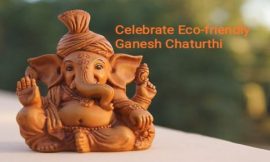
Sitalsasthi is a Festival that celebrates the marriage of Lord Shiva and Goddess Parvati. Sitalasasthi Fall on the ‘sasthi’ (6th day) at some stage in the ‘Shukla Paksha’ (the waxing section of the moon) in the ‘Jyestha’month of the normal Hindu calendar. Sitalsasthi is celebrated with colossal fervour and gaiety all over India, especially in western Orissa. The Sambalpur carnival on Sital Sasthi is a famous match that attracts heaps of travellers from all over India and abroad.
Beleaf of sitalasasthi festival
Sitalsasthi is observed to celebrate the marriage of Shiva and Parvati – as depicted in the Shiva Purana. When Tarakasur was causing terror and devastation all over the world(Swarga, Martiya, and Patala), all the Devata‘s approached Vishnu to find out a solution. Vishnu was undone; as Bramha had bestowed a boon that Tarakasura can only be killed by the son of Shiva. Tarakasura knew it well that after the death of his first wife, Sati (Dakshayani), Shiva was left bereft, withdrew from the world, and roamed in the wilderness living a life of austerity and would never have a son; further, Shiva was in deep meditation. Vishnu suggested all the Devatas approach Shakti and request her to take birth as Parvati. On the request of all the Devatas Shakti reincarnate herself as Sati (Parvati) born as the daughter of Himalaya and grew into a supremely beautiful young woman. Narada told many stories of Shiva to Parvati and persuaded her to seek Shiva in marriage. Parvati set in meditation, but even after ages passed Shiva’s meditation could not be broken. Again all the Devatas approached Vishnu to solve the problem. Suggested by Vishnu, Kamadeva took his bow and threw kamabana(Love Arrow) at Shiva. Shiva woke up and opened his third eye and burnt Kamadeva as a punishment; since then Kamadeva took the shape of Ananga. But as a result of this Parvati’s meditation was fulfilled.

Before the marriage with Parvati, Shiva wanted to test her, to know how deeply she loves him. He incarnated himself as a Batu brahmana(Short heightened Brahmin) and told Parvati that, Oh! Parvati, you are young and beautiful, why do you choose to marry an old fellow who lives in smasana (GraveYard), wears tree bark, and snakes as ornaments. I know that Maheswara(Shiva) you want to marry, a half-naked fellow, looks ugly, no one for sure knows his ‘kula’ and ‘gotra’, and how could you ever be happy with such a nomad. Listening to the suggestion of the Batu brahman she got angry, and told Oh! Brahmana, even after reading so many shastras you are still ignorant about Shiva, how foolish you are? I am not bothered whether he is old or young, ugly or handsome I am not marrying him of his handsomeness, I am attracted towards him for his knowledge. I will not accept anyone else other than him in marriage. Satisfied with all his tests, Shiva appeared in his divine self. On the Jyeshta Shukla paksha Panchami, they got married.
Celebrations
- The festivities last for a length of 5 days. During this festival, a household of the area is chosen to play the role of Parvati’s father and mom, and they existing her palms to Shiva for marriage. As Lord Shiva is acknowledged as ‘Swayam Bhu’, no one performs the function of his parents. The first day of the competition is recognized as ‘Patra Pendi’ day. On this day the chosen household adopts Parvati. After two days, the idol of Goddess Parvati arrives at the residence of her adopted parents. As a phase of the ritual, from this adopted home, the bride (idol of Goddess Parvati) is taken in a grand procession in the night time for the marriage ceremony.
- Much in the equal way, Lord Shiva, accompanied with the aid of different Hindu Gods and Goddesses arrive at the vicinity of the marriage ceremony. This divine procession is lead with the aid of Lord Narsimha and Lord Hanuman.
- All the ordinary rituals and customs are carried out even for this divine marriage ceremony. The celebrations are witnessed by way of devotees from the neighboring states and beyond. After the ceremonies, on the following evening, the divine couple starts their experience of the town, referred to as ‘Nagar Parikrama’. This match is additionally popularly acknowledged as ‘Sital Sasthi Yatra’. Folk music, folk dance, and different such activities shape the chief appeal of this carnival.
- On the event of this marriage ceremony, a massive wide variety of ‘Hijadas’ or ‘Eunuchs’ come to take part in the celebrations. This is so as Lord Shiva was once additionally referred as ‘Ardhanarishwara’ (half female half of man).
2021 Tuesday, fifteenth of June
2022 Monday, 6th of June
2023 Friday, 26th of May
2024 Tuesday, eleventh of June
2025 Saturday, thirty first of May
2026 Friday, nineteenth of June


